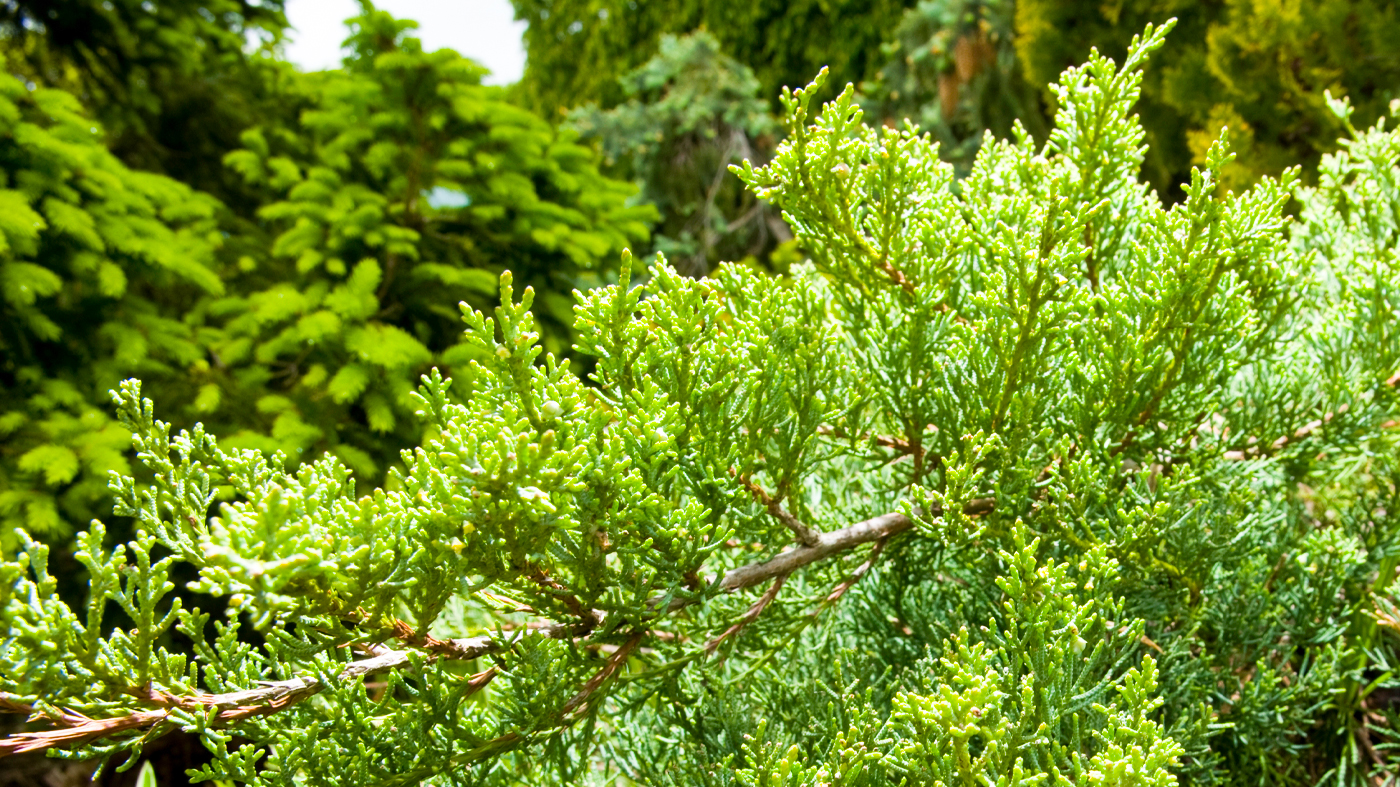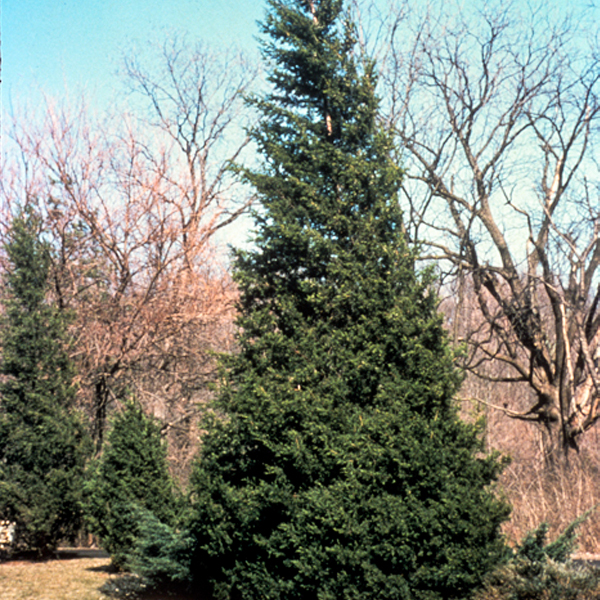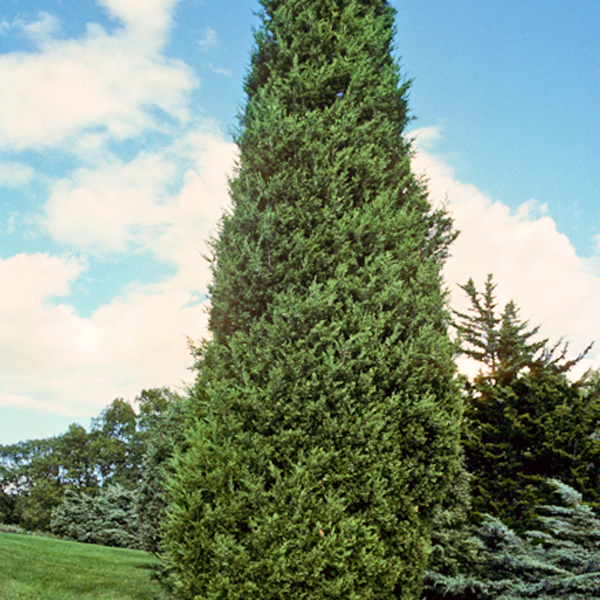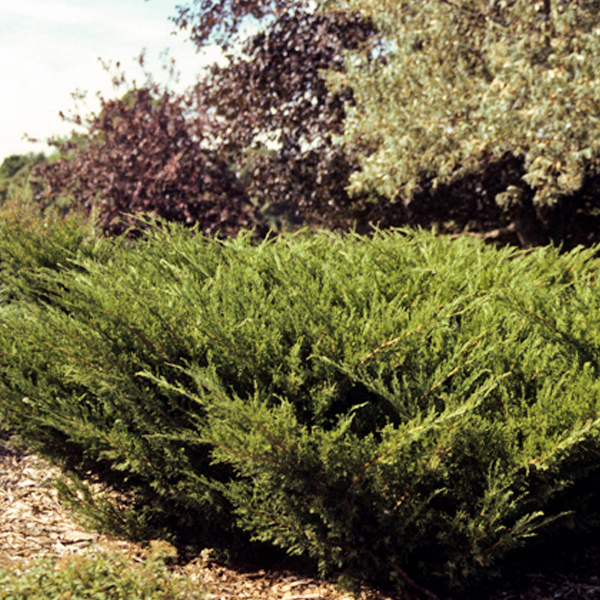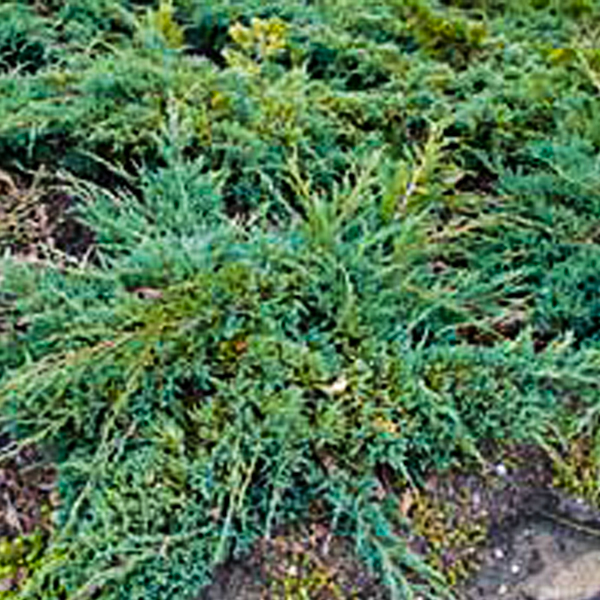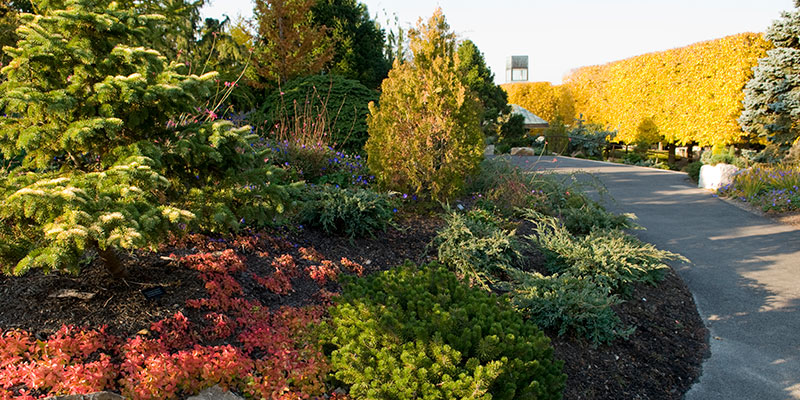

Junipers
Juniperus spp.
What would you think about a group of versatile plants that possessed the following characteristics?
They're evergreen, but not exclusively so. Some are silvery blue, blue-green, yellow-green, or a shade of green so dark it appears almost black on a cloudy winter day. Plants in this group take many forms: spreading, cascading, ground-hugging, shrubby, conical, globular, upright, and treelike. These evergreens are adaptable to most soil conditions, and some can even tolerate salt spray. They make excellent screening for privacy, tolerate urban pollution, and can be pruned to suit the site. Large specimens lend a natural, rugged look to a landscape, where tinier species are perfectly at home in hot, dry rock gardens. And for gardeners in wooded areas, here's the best feature of all — the deer leave them alone!
Do you recognize these plants as junipers?
Most gardeners are familiar with the juniper, but unfortunately, familiar with just one or two forms, including the highly overused Juniperus x media 'Pfitzeriana'. There are more than 50 different species of this plant, with hundreds of cultivars, and many of them would make excellent additions to most landscape situations. At the Chicago Botanic Garden, junipers of all shapes and sizes are displayed in a variety of attractive settings, from open fields to stylized Japanese gardens. Certain junipers tolerate snow loads without a problem and are often shown to advantage massed in the winter garden.
A close examination of junipers reveals some very interesting characteristics.
There are actually two types of needles, the sharply pointed juvenile needle and the more adult compressed scale. Certain cultivars will display both types. Junipers are true conifers; they produce highly compressed cones that are often mistakenly called berries. The bark of many species is an attractive, peeling russet color, familiar to many as the red cedar found in furniture or wood paneling.
Junipers should be appreciated for their soft, feathery qualities and therefore are not good candidates for shearing. Because of their spreading nature, they're excellent choices for screening. Many of the prostrate forms can thrive in hot, dry, inhospitable sites or can be used for erosion control. They provide shelter, nesting areas and food (edible fruit) for resident wildlife. Junipers are relatively carefree plants as long as their basic needs are met. They must have full sun, good air circulation, and good drainage. Extremely dense plantings that are watered overhead will be susceptible to the fungal blights that can afflict some species.
But there is no question about it.
Junipers have suffered from overuse and underimagination. Too often, no thought was given to their mature height or, more importantly, their mature width. They may be slow to moderate in growth rate, but they tend to spread significantly. It seems that along with yews in shade, junipers in sun have been the norm for foundation plants. But there is a fabulous selection of worthy junipers available for all sunny sites; and they’re not just your grandmother's Pfitzer juniper!
This winter, as you consider future plants for your garden, familiarize yourself with some of the junipers recommended by the Chicago Botanic Garden. The following are but a few of the ones given a "thumbs up" for Chicago gardens. They serve as examples of the wide diversity of colors, habits, and sizes of the juniper species.


